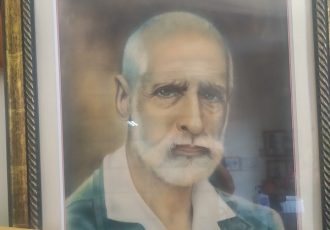Dramatic and heroic, Vietnam’s history has touched the whole world. Known for its many wars and multiple colonial occupations. The various wars in Vietnam bear witness to great suffering. But Vietnam’s history is also punctuated by achievements that make the Vietnamese people proud.
It seems that the Vietnamese people have always been relentless in repelling the invader and yearning for freedom and independence.
This independence was officially recognized on September 2, 1945. The day President Ho Chi Minh proclaimed the Declaration of Independence, a new page of history began for the Vietnamese people! An era of independence and freedom!
We do not pretend here to be an exhaustive development of the history of Vietnam. Here in this article are the main lines of Vietnam’s history summarized that led it to that of an independent and autonomous country.

Summary
The semi-legendary period (-1000 BC)
From 1000 years before Christ.
It should be noted that the first known historical document relating the facts of the history of Vietnam dates back to 1339 AD. Until then, due to a lack of written documentation; the history of Vietnam is told, mixing history and legends…
Here are the beginnings of the history of Vietnam, a legend that dates back to the dawn of time. According to the annals, King Lac-Long, illustrious descendant of the Hông-Bàng, of the line of dragons (fabulous animal of the South Seas and considered the major totem of the first Viet) married an immortal, named Au-Co, descendant of the geniuses of the mountain.
From this union were born one hundred boys, all beautiful and strong. After this happy event, the prince and the fairy, aware of the transience of existence and the inescapable brevity of human happiness, resolved to separate. Au-Co then left for the mountains with fifty of their children.
The others followed their father to the shores of the South Seas. This dissemination would have allowed the birth of the hundred regions of Vietnam (Bach Viet), spread over a very large area between the Red River in the North, the Champa in the South, the China Sea in the East and the Tzu Chuan in the West. Of all these principalities, the most dynamic and best organized seemed to be Lake Vietnam, or Van-Lang, literally the Land of the Literate, whose extent corresponded to present-day North Vietnam to the northern part of Central Vietnam.
From legend to history of Vietnam
The legend gives way to history from 257 BC, King An-Duong, a Chinese ruler, descendant of the Thuc ruling the kingdom of Tây-Au, present-day Yunnan (China), furious at having been refused the hand of a Vietnamese princess, raised an army and undertook the annexation of Lake Vietnam. He made it the kingdom of Au-Lac, (shortcut of Tây-Au and Lac-Viêt). King An-Duong reigned until 208 BC thanks in particular to the protection of a spiral-shaped citadel, called Loa-Thành.
In 206 BC, the Chinese general Zha-Tuo, called by the Vietnamese, overthrew King An duong. Called the “General Triêu-Dà” he reigned over Nam-Vietnam, one of the hundred Viet principalities of the coastal zone located northeast of present-day Tonkin, he subdued the kingdom of Au-Lac, thanks to a matrimonial subterfuge. A semblance of marriage between his son Trong-Thuy and Princess My-Châu, daughter of King An-Duong, allowed the conquest of the citadel with nine enclosures, reputed until then inviolable.
He founded the Southern Yue Dynasty or “Trieu Dynasty” and proclaimed himself king of Nam Viet.
The Triêu dynasty ruled until 111 BC, when the first Chinese rule in Vietnam’s history was established.
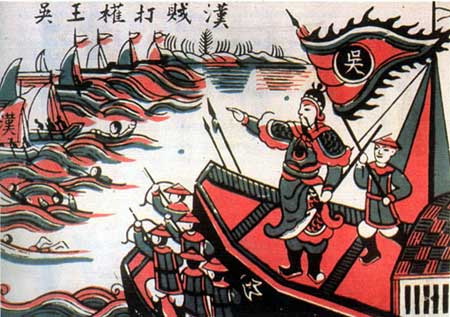
Chinese rule (111 BC). JC – 939 AD JC)
It was then the long night of Vietnam’s history, a night of ten centuries, during which Chinese civilization would firmly establish itself in the country. There were, of course, many uprisings, such as those of the Trung sisters in 39-43 AD, of Triêu Au in 248, of Ly Bôn in. 544, by Phùng Hung in 791, but some were quickly repressed, while others were only a short-lived success.
Chinese rule, which lasted about 1,000 years, from 111 BC to 938 AD, can be divided into four distinct periods:
– First Chinese rule (111 BC – 43 AD).
The Chinese general Lou Po-to (Lô-bac-Duc) destroyed the kingdom of Nam-yue (Nam-Vietnam) in 111 BC. The Chinese protectorate is established on Tonkin (Giao-Chi). In 39-43 AD revolt of the Trung-Trac sisters, Trung-Nhi, national heroines of Vietnam.
– Second Chinese domination (44-543 AD).
Period of the great civilizing Chinese governors: Si Nhiêp, Tich Quang, Sinization of Vietnam (then called: Giao Chi, then Giao Châu). Formation of Lin-Yi, nucleus of the future Champa. Chinese campaigns against Champa.
– Earlier Ly Dynasty (544-602)
Confusing period. The Chinese are maintained, despite several ephemeral and sometimes rival Vietnamese dynasties: earlier Ly, Later Triêu, Later Lily. Legend of the resistance of Ly Nam Dê at the Lake of Night. The kingdom received the name of Van-Xuân, then Viet.
– Third Chinese domination (603- 938)
New period of Chinese domination, the country receives the names of An-nam-dô-hô-phu (General Protectorate of Annam); Tran nam dô hô phu (General Protectorate of Tran-Nam). The T’ang (618-907, and 923-936) left their mark on Tonkin by the Government of Kao P’ing (Cao Bien), the foundation of Dai – La and a strong administrative organization. However, many uprisings took place.
The Great National Dynasties (939- l945)
National independence
It was not until the tenth century that the long Chinese domination came to an end. Bach Dan g’s famous victorymarks the history of Vietnam. In the year of grace 939, Ngô Quyên drove the Chinese out of the country and founded the first national dynasty. Then will follow a system of power based on dynasties lasting about a thousand years.
For ten centuries, eight dynasties would succeed each other on the throne of Vietnam, with the same desire to organize and enlarge the kingdom.
Ngō Dynasty (939–967)
The capital of the country is in Cô Loa in northern Vietnam. In 944, on the death of Ngô-Quyên founder of the dynasty, the kingdom fell into anarchy and was divided between twelve lords. This is the period of the twelve “Su quân”.
Dinh Dynasty (968 – 980)
As a result of this troubled period, the first truly independent Vietnamese king in the history of Vietnam emerged: Dinh Tien Hoang (963-979) who founded the Dinh dynasty. The kingdom takes the name of Dai Cô Viêt.
Earlier Le Dynasty (980 – 1009)
Marked by the struggles against China and Champa and the submission of elements of unrest inside.
Earlier Ly Dynasty (1010 – 1214)
The capital was established at Thang-Long (Hanoi) in 1010. Continuation of the struggles against China and Champa, effort to unify the country, military, administrative, economic organization of the country. Great prosperity of Buddhism. The kingdom was called Dai Viêt (from 1054 to 1164) then Annam until 1802.
Tran Dynasty (1225–1400)
Continuation of the work of unification and organization. Victorious struggles against the Mongols during which Marshal Prince Tran Hung-Dao, who became a national hero, distinguished himself. The country takes the name of Annam (1164) which he will keep until 1802.
Ho Dynasty (1400 – 1407)
Ho Qui Ly usurps the throne. The country is plagued by serious internal unrest; the Chinese are interfering in internal affairs.
Chinese rule of the Ming (1407 – l427)
The Ming eventually controlled Annam from 1407 to 1427.
Le Dynasty (1428–1789)
The Law from Lam Son (Thanh Hoa) drives out the dominant Chinese after a ten-year bitter struggle. He founded in 1428 the Le dynasty marked by the following facts:
– Military, administrative and judicial organization (Code of the Lê) very advanced
– Development of literature and historical and geographical studies. The works are written in Chinese characters or in demotic writing (nom). Vietnam’s most renowned writers lived under this dynasty
– Triumph of Confucianism and the doctrine of the literate
– Introduction of Christianity by European missionaries. Vietnamese contacts with foreign traders and adventurers
– Creation of the quôc-ngu transcription system by Father Alexander of Rhodes
– Definitive victory over the Champa. Occupation of South Vietnam through dynastic marriages. Marriage of Vietnamese princesses with the kings of Champa and Chen-La
– Struggles between the lords of the North (Trinh) and the lords of the South (Nguyen)
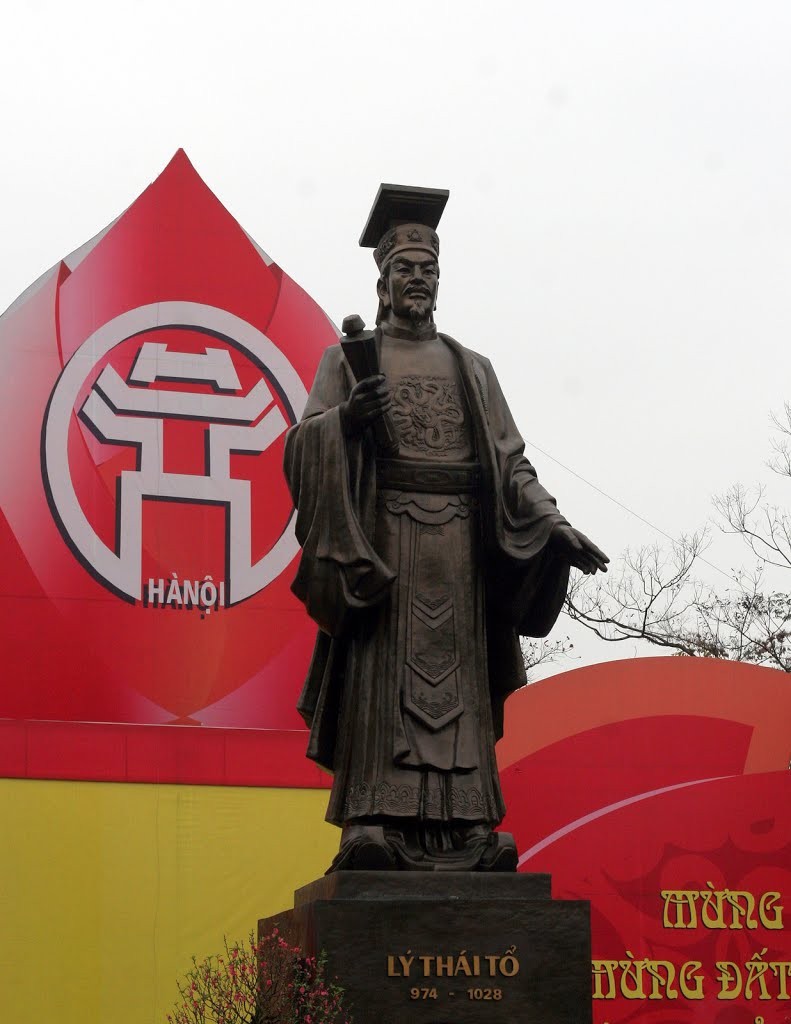
Nguyen Dynasty (1802–1945)
Gia Long, after defeating the lords of the North and the Tay Son dynasty (1788-1802), founded the Nguyen dynasty. The kingdom was then called Vietnam from 1804 to 1820, Dai Nam from 1820.
Vietnam could have experienced a few centuries of respite, without this centuries-old rivalry between the Trinh Lords in the North and the Nguyen Lords in the South, who taunted the authority of the Le kings and constituted two independent fiefdoms, to the detriment of national unity. These rivalries set the country on fire and bloodshed as early as 1627 and lasted until 1775, when these two families experienced decadence.
Fortunately, the spirit that animated the first Viet had remained the same. In the most critical moments of history, far-sighted patriots always appeared at the right time to effect the reunification of the country.
Thus emerged from the peasant mass the Tây Son Brothers, who took advantage of internal divisions to raise the banner of Liberation. At the same time, they drove out the Nguyen and put the last ruler of the Le on the run. One of them, Nguyen Hue, proclaimed himself Emperor, under the name of Quang Trung, and with him the country regained its original unity. Unfortunately he died in 1792, without being able to ensure the sustainability of the dynasty.
Reunification
Meanwhile, in the south, Nguyen Anh, the successor of the Nguyen Lords, resumed the attack on the increasingly weakened Tay Son and managed in 1801 to unify the country again, after 27 years of struggle. He then proclaimed himself emperor in 1802 and took as his reign name that of Gia Long, shortened from Gia Dinh (Lower Cochinchina) and Thang Long (capital of North Vietnam); he adopted as his national name that of Vietnam, to signify that it encompassed both the territories of ancient An Nam (Tonkin proper) and Viet Thuong corresponding to the former Cham-pa, to which was to be added Lower Cochinchina.
From Gia-Long, Vietnam would experience a short period of peace that was to be interrupted around the second half of the nineteenth century by the irruption of French squadrons in its territorial waters.
Kings under the Nguyen Dynasty:
Gia Long (1802-1819):
He is the first king of the Nguyen Dynasty in the history of Vietnam. Thang Chung, Nguyen Phuoc Anh or Nguyen Anh. Born in Hue in 1759, the youngest nephew of hue lord Dinh Vuong, he is considered the founder of the Nguyen Dynasty. He had 31 children (13 sons and 18 daughters).
Minh Mang (1820-1840):
Nguyen Phuoc Dam, born in 1791, 4th son of Gia Long, rigid legislator, he began during his reign a policy at the antipodes of that of his father, anti-European and anti-Christian (in 1825, he launched the first edicts of persecution against Christians), and centralized. An enlightened prince, active, endowed with administrative skills, he had many works of public utility carried out, regulated studies, etc. He died of a fall from a horse. He had 142 children (78 sons and 64 daughters) including Prince Tuy Ly and Prince Tung Thien.
Thiêu Tri (1841-1847):
Miên Tong or Nguyen Phuoc Hoang Thi. The eldest son of Minh Mang, born in 1807, he continued his father’s policy and died of an attack of apoplexy apparently provoked by the false news that French ships were preparing to bomb the Vietnamese coast. A monarch who was not very open to reformist ideas, he was resolutely hostile to the presence, it is true, more and more dissolving, of Europeans. He is reputed to have had objects of Western origin destroyed in the palace. Under his rule, Vietnam reached its greatest expansion because in 1846, Cambodia would have ceded Cochinchina to him. He had 64 children (29 sons and 35 daughters).
Tu Duc (1847-1883):
Nguyen Phuoc Hoang Nham. Born in 1829, the youngest son of Thiêu Tri and a woman from Go Cong province (Cochinchina), he was crowned in November 1847 at the expense of his elder brother Hong Bao, who fomented a revolt in 1848. Tu Duc’s reaction was very violent; he had his brother and his entire family executed. Accused of complicity in this blood-crushed uprising, Christians had to suffer further persecution. His anti-religious policies offered France and Spain a pretext to intervene. His reign was mourned not only by the gradual dismemberment of Vietnam, but also by the fact that the Emperor could not have an heir. In 1845, smallpox followed by a testicular complication rendered him sterile. This explains the serious dynastic crises to come.
Duc Duc (1883):
Son of Prince Thoai Thai Vuong (+1877), the younger brother of Tu Duc. Adopted by the latter, he succeeded him in July 1883, under the control of a regency council (including Nguyen Van Tuong and Ton That Thuyêt). Three days after his advent, he was deposed and condemned by the court of Hue to starve to death because of his “debauchery” (not having followed the prescriptions of mourning and fasting). Walled in a former rest pavilion of his predecessor, since called The Duke Duke Pavilion, he died there after a week. This pavilion located within the walls of the Citadel, west of the Forbidden City, was transformed into a pagoda in his memory.
Ham Nghi (1884-1885):
Born in Hue in 1870, brother of Kiên Phuc, crowned king of Annam with the consent of the France on August 2, 1884 at the age of 13, under the tutelage of the tug regents Tuong and Tuyêt. During the Hue lookout, on the night of July 4 to 5, 1885, he fled with Tuyêt and took refuge with mandarins (including Ho Chi Minh’s father) in Cam-lo where supplies had been prepared and from where the insurrection against the protectorate (Can Vuong movement) was directed. Ham Nghi was deposed from the throne and replaced by Dong Khanh.
Hunted by Captain Boulangié of the squad of Annamite hunters, head of post of Tha-nac, he was delivered by Muong, in December 1887, to Ta bao, a small village in Upper Giai, after three years of wandering in the provinces of Nghê-tinh and Thanh hóa. Exiled in Algeria (1888), he became known there as the Prince of Annam. He married in 1904 a young pied-noir from Algiers, daughter of the Attorney General. He died in 1947.
Duy Tan (1907–1916):
Born in 1899. “Who killed Prince Vinh San?” In April 1987, thanks to the will of his children and the important help of Mr. Jacques Chirac, the mortal remains of Emperor Duy Tan. They were exhumed in Africa and transferred to Hue, Vietnam. An important ceremony marks the event and Duy Tan has since rested with his ancestors. Dethroned in 1916, he never abdicated, as such, he remains the last emperor of Annam.
Khai Dinh (1916-1925):
Born with the title of Buu Dao, in 1885. Only son of Dong Khanh, proclaimed emperor on May 18, 1916, at the age of 31. Chosen in difficult circumstances, he had to fight to assert a sovereignty eroded by the French administration. Seeking to develop a modern empire, he abolished the competitions of scholars who had become unrelated to contemporary reality. He was the first Vietnamese ruler to make a trip to France where he hoped to make clear Vietnam’s desire for autonomy through the return to a true protectorate. Stricken with impotence, he could not procreate and left no child. He died in November 1925.
Bao Dai (1925-1945):
Born Prince Vinh Thuy in 1914, adopted son of Khai Dinh, crowned in July 1926, at the age of 12. Stays several times in France. Clashes with the administration which confines him to a representative role. In August 1945, he abdicated and the new Viet Minh regime appointed him Supreme Councillor.In 1946, he moved to Hong Kong. The France appealed to him in 1948, considering his abdication as an interlude without significance. The defeat of Dien Bien Phu allowed the United States to place Ngô Dinh Diêm at the head of the country, which ousted the emperor on October 23, 1955 by a rigged referendum. He held the imperial seal until his death in July 1997 in Paris.
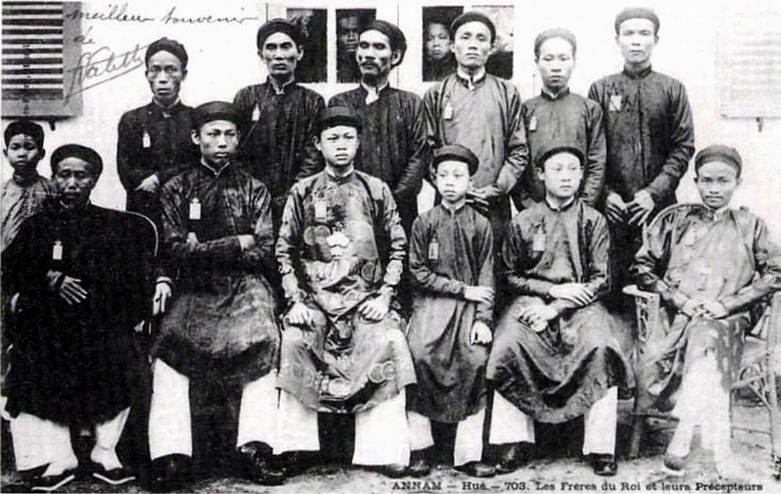
French colonization (1862-1945)
In 1883, the France annexed Vietnam to its colonial empire. Cochinchina to the south became a French colony, as well as the cities of Hanoi, Haiphong and Tourane. The rest of the territory, Tonkin in the north, Annam in the center, remained in principle under the direct authority of the Nguyễn emperors within a protectorate. Vietnam is now part of the Indochinese Union which also includes the kingdoms of present-day Laos and Cambodia.
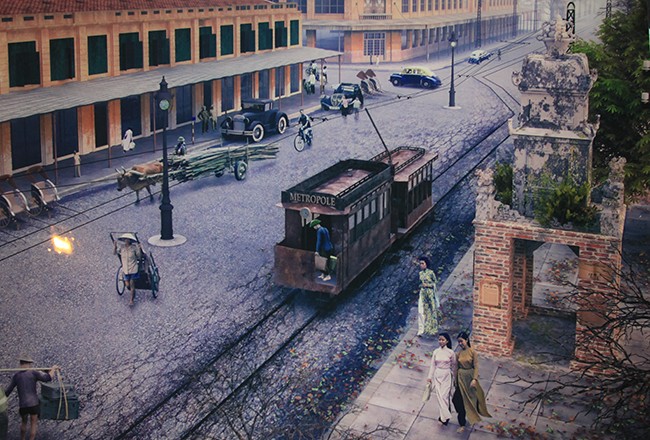
Since the arrival of the soldiers of Emperor Napoleon III, the Vietnamese have not ceased to revolt against the colonial grip. From Phan Boi Chau to Ho Chi Minh via Ngô Đình Diệm and Emperor Bảo Đại. Vietnamese resistance against French colonization followed one another, from peasant revolts and uprisings to those of scholars such as Phan Châu Trinh. Another notable attempt at overthrow is that of Emperor Duy Tan dethroned in 1916 for patriotism and exiled to Reunion Island by the Colonial Administration.
In 1930, the Indochinese Communist Party was founded by a certain Nguyen Sinh Cung, the latter successively calling himself Nguyen Tat Thanh and Nguyen Ai Quoc (Nguyen the Patriot), then finally Hồ chí Minh (lake of wisdom or lake of light). He is considered one of the founding fathers of the French Communist Party and the President of the Democratic Republic of Vietnam.
Cinematographic references of this period
The French film Indochine recounts this period in Vietnam’s history of the 1920s-50s.
The American film “A Quiet American” based on a novel by Graham Greene (A quiet American) tells the story of Vietnam during the regime of Ngô Đình Diệm of 1955-1963.
End of French colonization and independence of Vietnam (1945 – 1954)
Finally, following the neutralization of French authority on March 9, 1945, by Japanese forces stationed in Vietnam, a first national government chaired by Professor Tran Trong Kim moved to Hue in April of the same year. Subsequently, several governments succeeded each other at a fairly rapid pace. Each of them had to face many difficulties internally as well as externally.
On September two, 1945, President Ho Chi Minh declared the Declaration of Independence, marking the birth of the Democratic Republic of Vietnam, the current Socialist Republic of Vietnam.
Nevertheless, this de facto accession to independence remained worthless at the international level. It was only ten years later, that is to say on June 4, 1954, that the Government of the French Republic legally formalized the independence of Vietnam, which, consequently, legally recovered on that date its historical borders, as they appeared in the official topographical surveys of 1862.
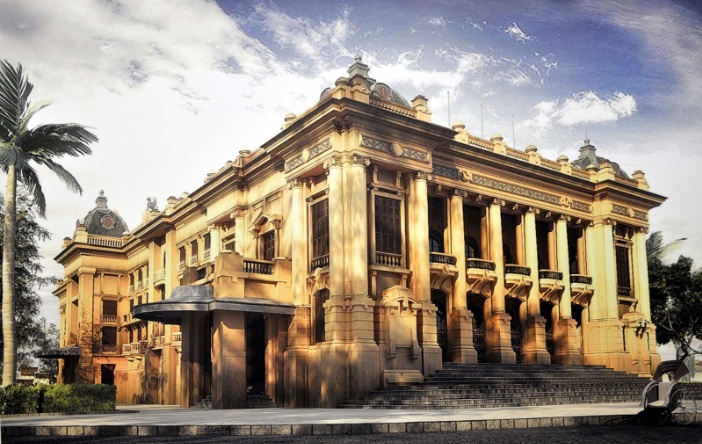
The Vietnam War (1954 – 1975)
The great joy of the Vietnamese people was short-lived. Indeed, the fate of the country was not sealed: a month later, on July 21, 1954 exactly, the Geneva Conference ratified the ceasefire agreements between the France and the Viet Minh. It decreed the division of the national territory into two roughly equal portions. Along a demarcation line consisting of the 17th parallel, approximately at the height of the Ben Hai River, in quang Tri province (Central Vietnam).
Split of the territory and beginning of tensions north-south.
The provinces north of this river would henceforth be part of the Democratic Republic of Vietnam. While the territories located in the South would first pass under the jurisdiction of the State of Vietnam, then under that of the Republic of Vietnam founded on October 26, 1955, after a popular referendum.
The northern part is ruled by a communist regime, the Democratic Republic of Vietnam. The South became the Republic of Vietnam, firmly anti-communist and supported by the United States.
Hostility is great between the two Vietnamese poles. This leads the United States to become more involved, under the pretext of maintaining peace. This is the outbreak of the Vietnam War.
The Vietnam War, a tragic event in Vietnam’s history.
An awful conflict that will upset the whole world begins. It pits South Vietnam, slyly seconded by the United States, against North Vietnam. This war, causing the death of millions of people, ends 20 years later. As the conflict proved intractable and increasingly unpopular, U.S. troops withdrew.
Key date in vietnam’s history: April 30, 1975 the fall of Saigon
The end of the Vietnam War is marked by the date of April 30, 1975, the day of the fall of Saigon and strongly marks the history of Saigon. Communist forces invaded the southern metropolis at precisely noon. Less than an hour later, the tanks imposed themselves in front of the presidential palace. The leader of the southern troops Big Minh remains accepting his defeat, defeated, while the American ambassador Graham Martin fled by helicopter earlier in the morning. Big Minh is the last president of South Vietnam in the history of Vietnam. His term of office was two days.
“The boat people”
This event follows a landmark event in Vietnam’s history. The departure of a million South Vietnamese to foreign countries, the boat people.
Despite strong disagreements within Vietnam, leading to desperate population movements, it was the end of 30 years of wars. Vietnam will recover its sovereignty, the process is begun on September 2, 1945, during the declaration of Independence made by Ho Chi Minh.
1976: Official reunification in the Socialist Republic of Vietnam. Hanoi became the capital of the reunified country and, at the same time, Saigon became Ho Chi Minh City. The country passed in its entirety under the communist regime that continues to this day.
From 1975 to the present day
From 1975 to 1982: more than a million were sent to “re-education camps” or “new economic zones”. Their personal property (homes, businesses, businesses, land, etc.) was confiscated for a more or less long period. More than a million South Vietnamese fled the country. In total, three million people left Indochina between 1975 and 1997, according to the United Nations High Commissioner for Refugees.
January 1979: Việt Nam invaded Cambodia with the Third Indochina War on two fronts.
In the South against Cambodia to liberate this country from the pro-Chinese Khmer Rouge. They massacre the border regions with Việt Nam.
To the north with the People’s Republic of China through the millennial Sino-Vietnamese dispute. The Vietnamese occupation of Cambodia lasted ten years to stabilize the country until the UN took over.
Nowadays
In 1986: themarket and production are liberalized with the Vietnamese political economy.
Year 1992: Diplomatic relations are re-established with the United States and normalized with the People’s Republic of China.
In 1994: the US embargo is lifted, US-Vietnam relations normalize, and the market economy begins to apply.
Viet Nam is officially a socialist republic. The authorized party is the Vietnamese Communist Party, which controls all political institutions as well as the economy of the country. The supreme organ of the State is the People’s Assembly, which is renewed every five years. It is elected by universal suffrage. In addition, the People’s Assembly elects the President of the State with a symbolic role and the Prime Minister and his government. They are the second and third figures of the state. Indeed, in Viet Nam, the first figure of the state is the General Secretary of the Communist Party.
Man in power in 2021:
President of the Socialist Republic of Vietnam: Nguyễn Xuân Phúc
Prime Minister of Vietnam: Phạm Minh Chính
Secretary General of the Communist Party of Vietnam: NGUYEN PHU TRONG
Management of the covid 19 crisis
So far, Vietnam’s response to contain the Covid 19 outbreak has been considered effective. We give you the details in our article on Covid 19 crisis management in Vietnam.
To go further in the history of Vietnam
Reading these lines, you know a little more about the history of Vietnam. If you want to deepen your knowledge, we recommend several museums in Hanoi during your trip to Vietnam
- The Hanoi Ethnographic Museum. : Nguyễn Văn Huyên, Quan Hoa, Cầu Giấy, Hà Nội
- Ho Chi Minh Museum
- War Museum
- The Women’s Museum: 36 Lý Thường Kiệt, Hàng Bài, Hoàn Kiếm, Hà Nội
- Hoa lo Prison
- The Museum of Military History
Video on the history of Vietnam


